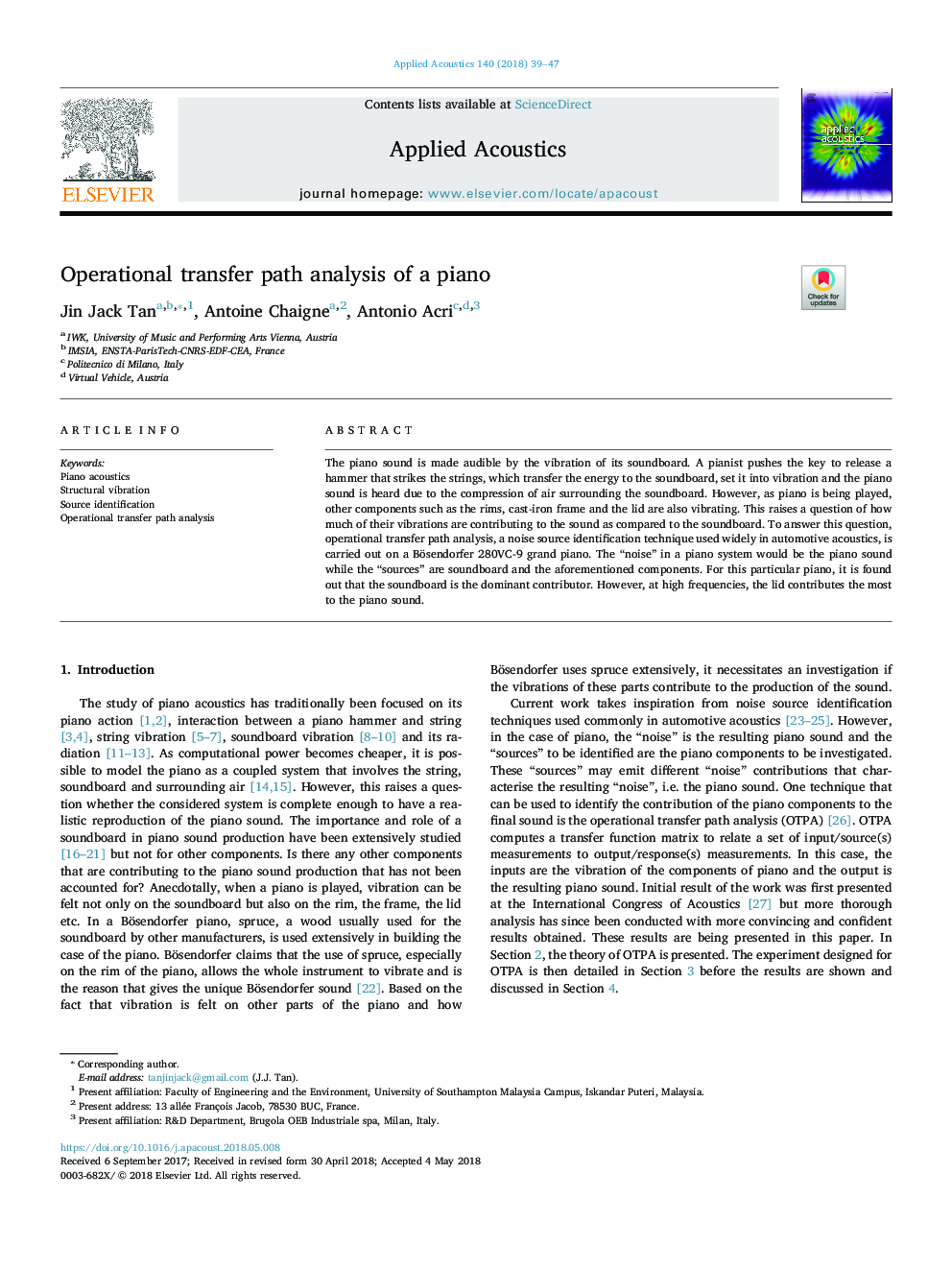| Article ID | Journal | Published Year | Pages | File Type |
|---|---|---|---|---|
| 7152052 | Applied Acoustics | 2018 | 9 Pages |
Abstract
The piano sound is made audible by the vibration of its soundboard. A pianist pushes the key to release a hammer that strikes the strings, which transfer the energy to the soundboard, set it into vibration and the piano sound is heard due to the compression of air surrounding the soundboard. However, as piano is being played, other components such as the rims, cast-iron frame and the lid are also vibrating. This raises a question of how much of their vibrations are contributing to the sound as compared to the soundboard. To answer this question, operational transfer path analysis, a noise source identification technique used widely in automotive acoustics, is carried out on a Bösendorfer 280VC-9 grand piano. The “noise” in a piano system would be the piano sound while the “sources” are soundboard and the aforementioned components. For this particular piano, it is found out that the soundboard is the dominant contributor. However, at high frequencies, the lid contributes the most to the piano sound.
Related Topics
Physical Sciences and Engineering
Engineering
Mechanical Engineering
Authors
Jin Jack Tan, Antoine Chaigne, Antonio Acri,
